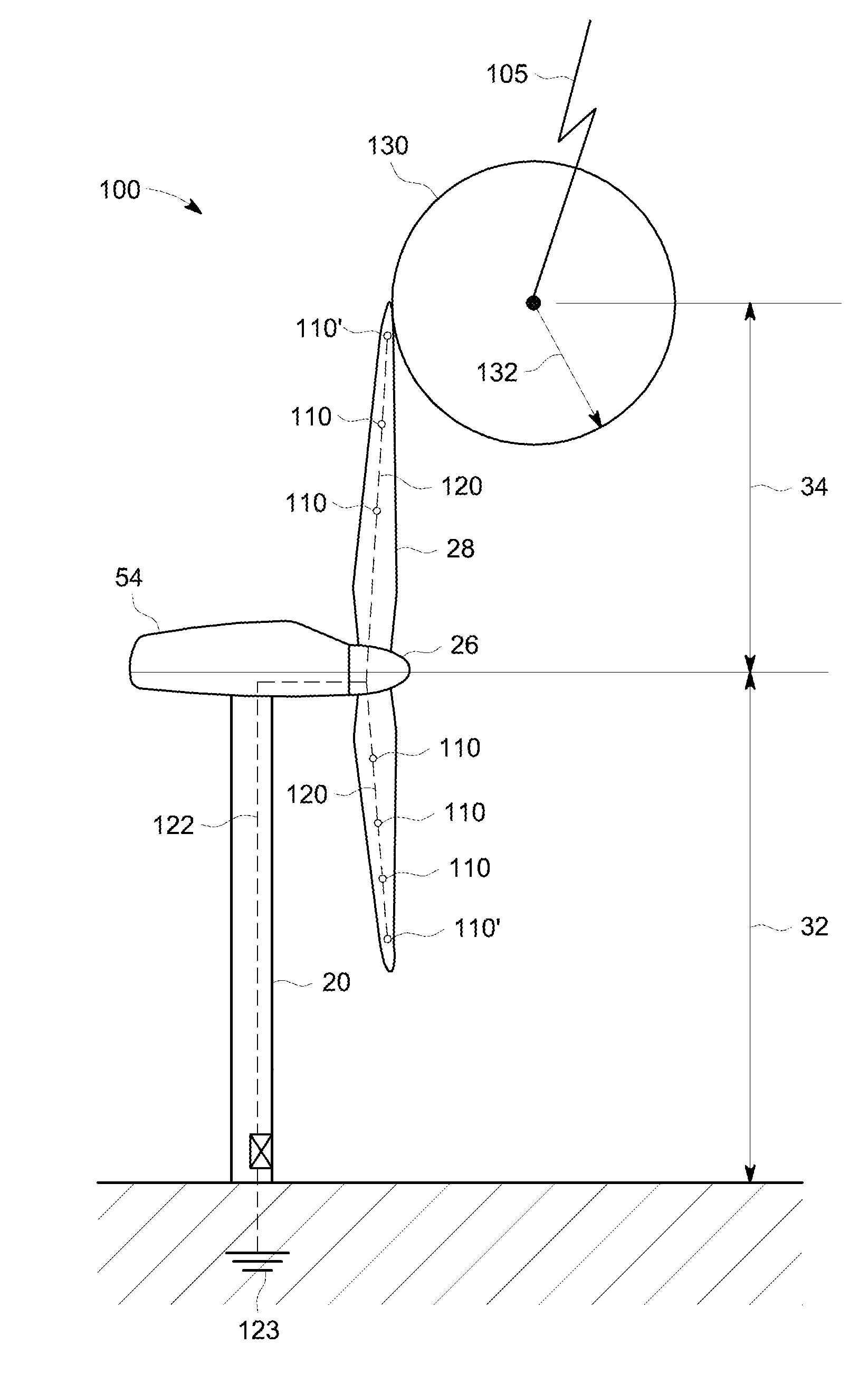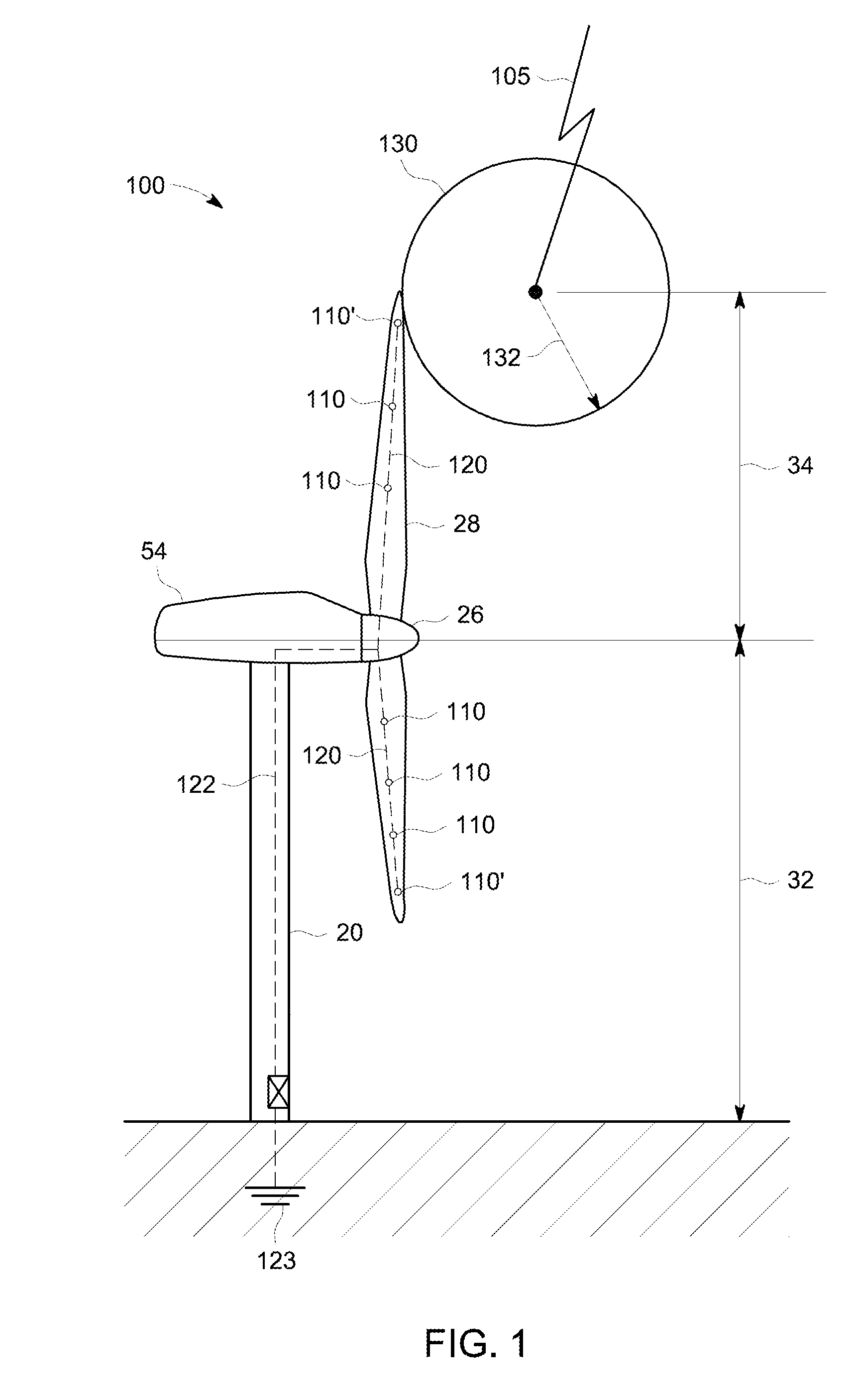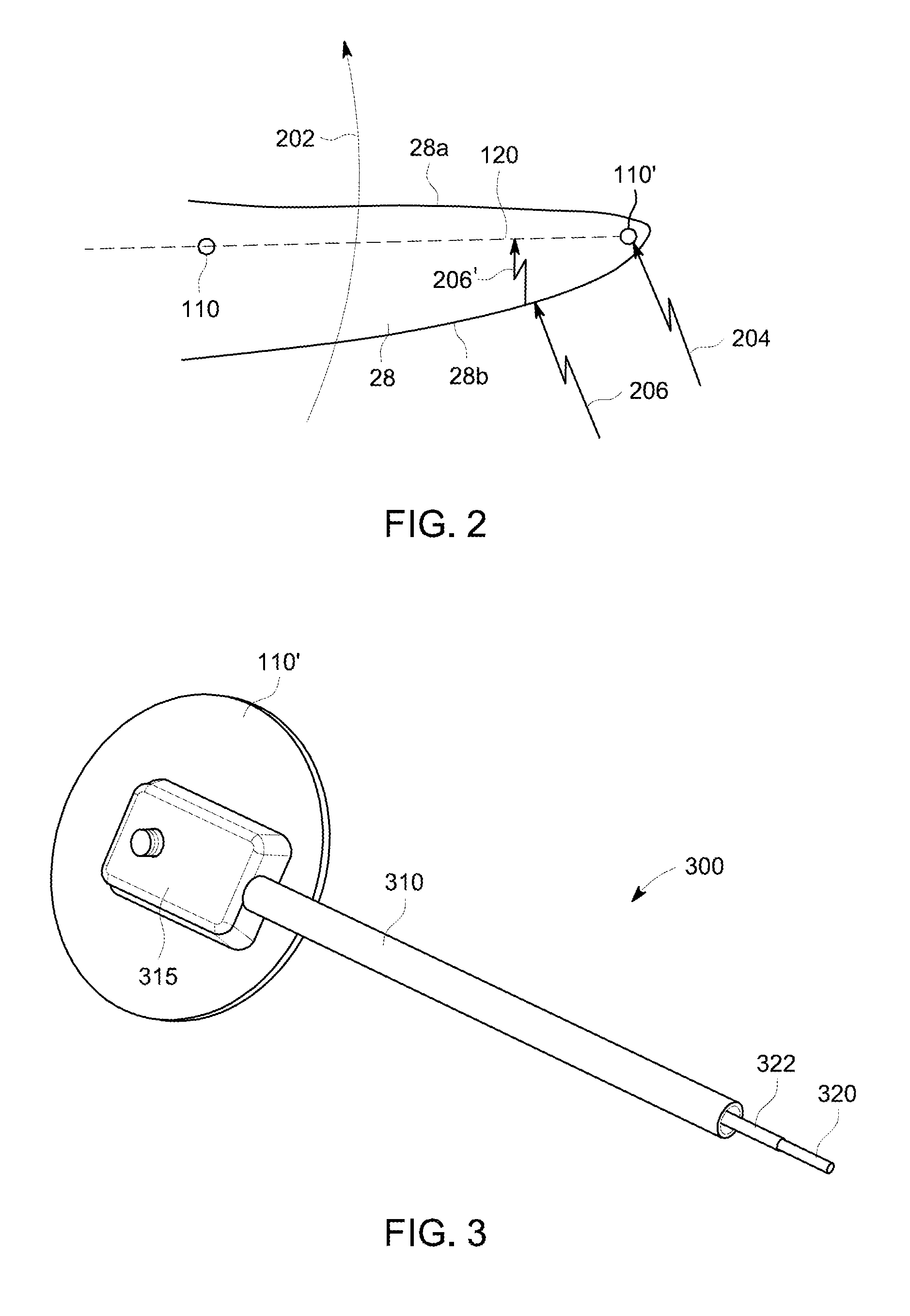Lightning protection for wind turbines
a technology for wind turbines and protection from light, applied in wind turbines, wind motors with parallel air flow, discharge by conduction/dissipation, etc., can solve problems such as increasing problems, wind turbine damage, and potential loss of multiple large production units
- Summary
- Abstract
- Description
- Claims
- Application Information
AI Technical Summary
Benefits of technology
Problems solved by technology
Method used
Image
Examples
Embodiment Construction
Reference will now be made in detail to the various aspects of the invention, one or more examples of which are illustrated in the figures. Each example is provided by way of explanation of the invention and is not meant as a limitation of the invention. For example, features illustrated or described as part of one aspect can be used on or in conjunction with other aspects to yield yet a further aspect. It is intended that the present invention includes such modifications and variations.
Modern wind turbine blades are structures manufactured of various materials, such as glass reinforced plastic (GRP), wood, wood laminate and carbon reinforced plastic (CRP). Parts and components such as mounting flanges, weights, bearings, wires, and electrical wiring are made of metal. Particularly, for blades constructed entirely from non-conducting materials, lightning attachment points, that is receptors, are mostly found close to the tip or distributed over the blade.
The generic problem of light...
PUM
 Login to View More
Login to View More Abstract
Description
Claims
Application Information
 Login to View More
Login to View More - R&D
- Intellectual Property
- Life Sciences
- Materials
- Tech Scout
- Unparalleled Data Quality
- Higher Quality Content
- 60% Fewer Hallucinations
Browse by: Latest US Patents, China's latest patents, Technical Efficacy Thesaurus, Application Domain, Technology Topic, Popular Technical Reports.
© 2025 PatSnap. All rights reserved.Legal|Privacy policy|Modern Slavery Act Transparency Statement|Sitemap|About US| Contact US: help@patsnap.com



